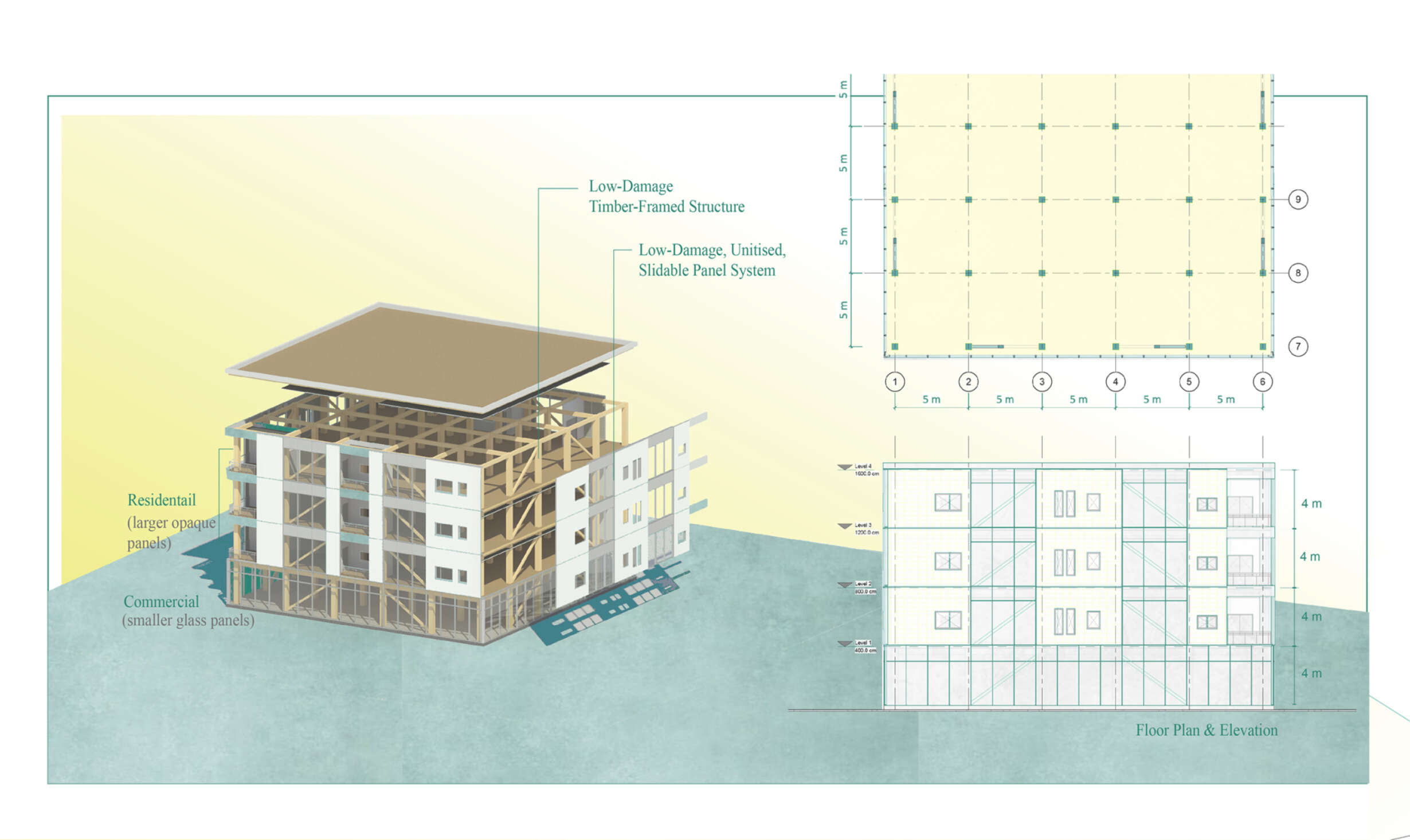Low-Damage Envelope Design for Multi-Storey Timber Buildings in Seismic Prone Regions

This thesis introduces a strategy to remodify only corner parts of existing seismic curtain walls, which can make panels slide in a controlled manner without breaking. Through three-dimensional analysis, seismic issues at the corners of slidable rigid panels were identified and visualised. This issue has been solved by redesigning corner mullions and adding corner angles. This strategy is applicable to both small and large, rigid unitised panels. It only requires slidable plug-in joints and special corner components to be adopted, thus enabling the design of façades to be flexible. The ability to accommodate drifts also brings environmental benefits through avoiding new carbon emissions created by replacement after earthquakes.

















